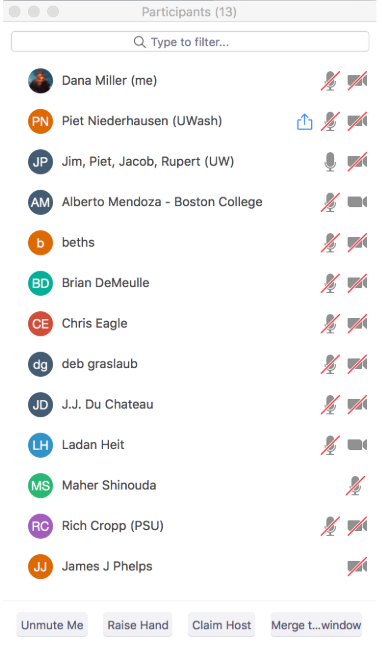- Agenda:
- Roll Call (by timezone - East to West)
- Scribe Shout-out - It's easy to scribe: How To Scribe Itana Calls Guide
- Agenda Bash
- Announcements
Main Topic - Business Architecture Skills
- Itana Org Updates (if any)
- Working Group Updates
- New2EA Working Group
- Continue Architect journey sessions.
- API Working Group
- The call will be this week.
- Business Architecture Working Group
- Upcoming calls on November 22nd and December 6th.
- New2EA Working Group
- Steering Committee Update
- Women in EA Working Group
- Apologies. I didn't capture. Beth did give an update.
- Women in EA Working Group
- Working Group Updates
- Attendees:
- Updates: See above.
- Main Agenda:
Business Architecture Skills
Business Architects must learn how to work at all levels of an organization.
UW Example: Central IT
Strategy-on-a-Page development only done in central IT. 500 person organization. Some groups seek out the EA Group for strategy development but others do not. Talk through outcomes they want rather than projects.Capability development: Gives people a shared language for developing services. Developing good abstractions for conversations. UW has found that bringing in capability definitions is not the most helpful. Let them come up with their own definitions but it is helpful to have a framework for a backup.
Service Definition: Product definitions are interchangeable. Managing from the side. Supporting the service owner with a definition. Using the Service Model Canvas.Process Mapping: Creating a process to deliver value to the customer. If there is not a Business Analyst in the group then work to identify a person to be their coach in the process improvement effort.
Louis King: Is there an assessment tool to determine if a group is ready to engage with the EA Group?
Piet: Gray Zone. Sometimes the sponsor wants something to happen when the team is not ready but they make it work.
Up and down the stack is a mix of hard and soft skills.Jim mentioned the skills of room management and whiteboard management
How to pick up the skills?
Working groups. Practice. Academic instruction. Piet mentioned that many of the education and training opportunities were not available when many of us were being formally educated.How to work with abstraction? How do we work with people who have difficulties with abstraction?
Piet suggests breaking down the abstraction into smaller pieces such a the business model canvas.
Ladan: Recently she has acquired a new skill of adjusting expectations. There are momentary disappointments but moving forward with small gains. Providing a space for opening the conversations. A trough of despair. Adjust standards.The IT capabilities represented in the CAUDIT model are somewhat lacking and the CAUDIT groups realizes this is a lack and working to improve them.
- Chat:
14:19:12 From J.J. Du Chateau : Piet, I sometimes see conflation of strategic goals/objectives (the ends) with strategy itself (the means). Do you experience this? And how much do U-Wash Biz Arch actually help with setting strategic goals/objectives vs helping getting them articulate in a certain manner?
14:24:24 From Alberto Mendoza - Boston College : Who defined what Capabilities are?
14:32:33 From James J Phelps : http://www.uxforthemasses.com/service-model-canvas/
14:33:03 From J.J. Du Chateau : Yes, that is it.
14:38:41 From James J Phelps : There is another skill that is around Room / Content management in the room. It is part of facilitation but it can be overlooked as a skill on its own.
14:39:42 From James J Phelps : https://www.sfia-online.org/en/framework/sfia-7/the-context-for-sfia
14:40:04 From James J Phelps : This is another framework that breaks things into Skills and Knowledge away from the Hard / Soft skill notion
14:40:25 From Alberto Mendoza - Boston College : EventStorming - An act of deliberate collective learning by Alberto Brandolini. It's not finished book but you can find it https://www.eventstorming.com/book/
14:40:59 From Alberto Mendoza - Boston College : in terms of facilitating sticky note discussions
15:02:02 From Louis King : Thank you Piet, all. That was fantastic. Have a great weekend. Cheers.
15:02:18 From Piet Niederhausen (UWash) : Thanks Louis. Have a good weekend everyone.
15:02:19 From Alberto Mendoza - Boston College : Thank you Piet!
15:04:03 From beths : Thank you, Piet!

